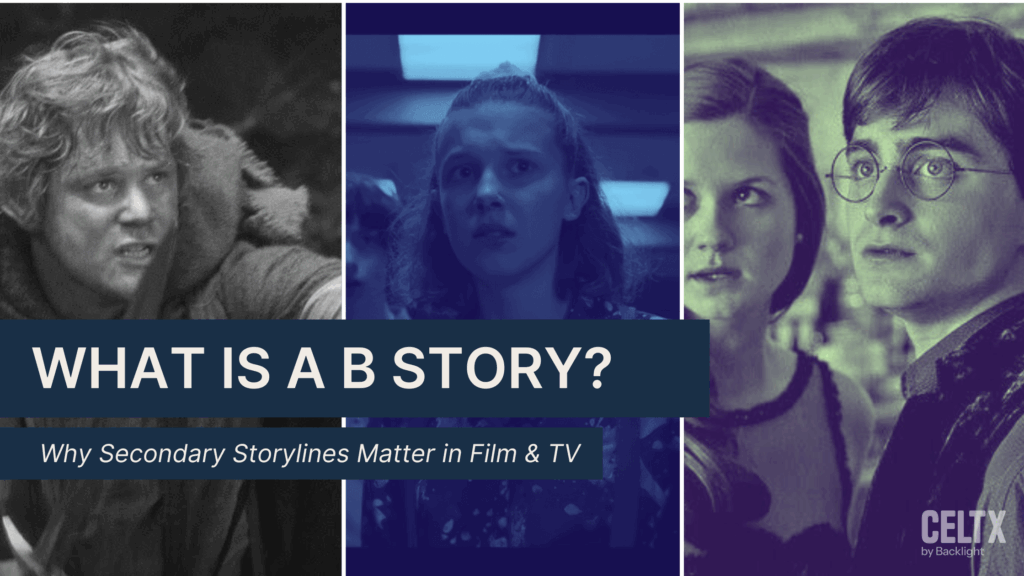
Every strong narrative needs layers and this is especially the case in film and television. Yes, the main plotline, or A story drives the story’s central conflict and resolution, but there’s often a secondary story thread running alongside.
This secondary plot is known as the B story. While it can be a subplot, the B story has a greater purpose than you may think. It doesn’t just fill time but can reveal character details, enhance the story’s overall theme, and bolster its emotional core.
But what makes the B story tick? How does it differ from the A story? Why is it so important to crafting a well-rounded and exciting narrative? Well, that’s what today’s blog is all about!
As it’s a Celtx blog, we’ll also throw in some key examples of kick-ass B-stories, common tropes, and our top tips for writing your own B story!
Are you sitting comfortably? Then we’ll begin…
In This Article
- What is a B Story?
- A Story vs. B Story
- Why do B Stories Matter?
- Common B Story Tropes
- B Story Examples from TV & Film
- How to Write a Strong B Story
- FAQ
- Conclusion

What is a B Story?
The B story is a secondary narrative thread that runs alongside the main plot of a movie or TV episode.
You’ll usually find that the B story will feature supporting characters, explore a different perspective of the protagonist’s journey, or provide subtext.
In short, the A story focuses on the main conflict: defeating a villain, solving a mystery, or reaching a goal. Meanwhile, the B story provides context and contrast.
However, the B story is more than just a way of filling in the gaps; it supports the main storyline, adding depth, emotion or humor. It often helps the audience understand the theme or the characters’ journeys.
A Story vs. B Story
Let’s break things down a little more and compare how we can define A story from the B story:
| Element | A story | B story |
| Focus | Main conflict or goal | Secondary theme, emotional arc, or subplot |
| Characters | Protagonist and antagonist | Supporting characters, love interest, sidekick |
| Stakes | High stakes that drive the overall story | Lower stakes which are more personal |
| Purpose | Resolve the core problem | Deepen character or theme |
| Screen Time | Major portion of the film or episode | Intermittent and often intercut with the A story |
Add structure to your script from the start.
Celtx beat sheets make tracking A and B stories easy.
Try Celtx for free today!
Why do B Stories Matter?
Before you devise a B story to accompany your A story, it’s crucial to understand why we use B stories and how they enhance a narrative overall. Here are three reasons why B stories matter:
1. B Stories Reinforce Theme
We know that one of the key purposes of a B story is to explore the theme of a narrative from a different perspective. This is because while the A story is usually plot-heavy, the B story’s job is often to highlight the emotion or philosophical question the film or episode is asking.
Take The Devil Wears Prada. In the A story, Andy is climbing the ladder at a high-fashion magazine. In the meantime, her B story depicts her strained relationships with her boyfriend and friends. The B story’s role in this instance is to mirror the themes of the movie: identity and the cost of ambition.
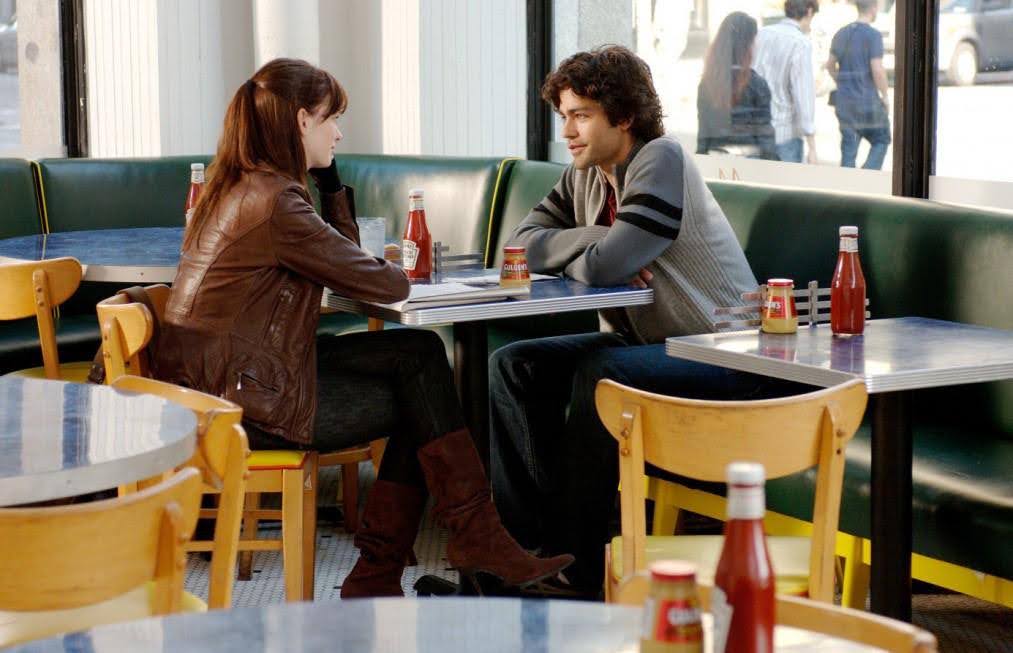
2. B Stories Develop Character
B stories are a fantastic place to allow your characters to breathe and grow. Secondary arcs within the B story allow us as the audience to see protagonists in a more personal, vulnerable, or humorous way.
This works particularly well in action movies where the A story is often intense for the protagonist and stuffed full of high stakes. Conversely, the B story may show the protagonist’s softer side through a budding romance or family relationship.
While the A story in Stranger Things involves supernatural threats from the Upside Down, the B stories throughout the series often focus on friendships, romantic tensions, or personal traumas. It’s these B stories that give further depth and humanity to a series that’s very genre heavy.
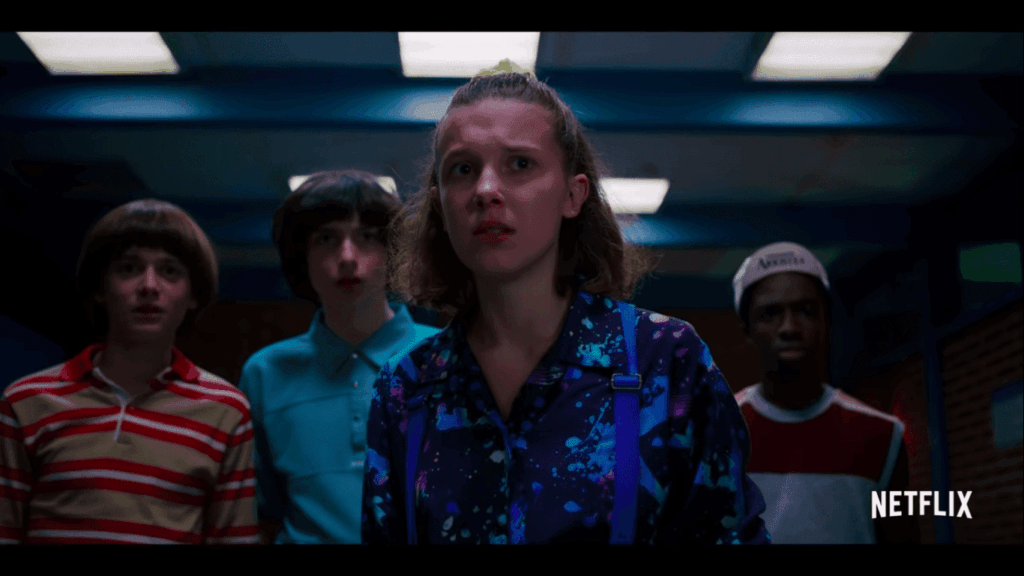
3. B Stories Support Pace and Structure
Yes, there will always be those tried-and-tested structures which just work in storytelling. Many of these have become tropes. Here are five strong B story ideas you can use to elevate your narratives:B stories also have a crucial structural purpose as they break up the A story’s intensity to give the audience some breathing space. Overall, this helps to manage a movie or series’ pacing and, most importantly, sustain audience engagement.
B stories keep the momentum going and allow writers to build suspense in the A story by cutting away at just the right moment.
Common B Story Tropes
1. The Love Interest
We’re kicking things off with the most classic B story of all time! Whether it’s Harry and Ginny’s blossoming romance in Harry Potter or Katniss and Peeta’s growing relationship in The Hunger Games, romantic subplots provide emotional stakes that can both mirror and, let’s face it, complicate the A story.
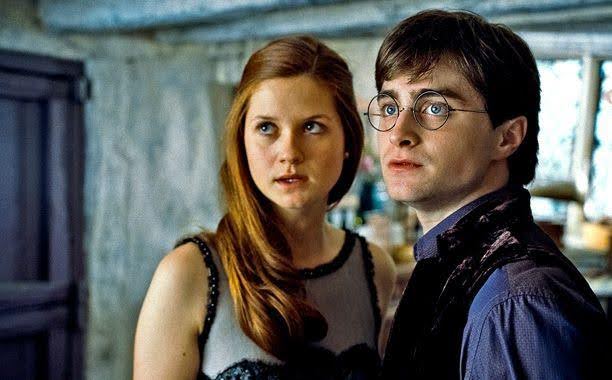
2. The Buddy/Sidekick
Other times, the B story follows a sidekick or best friend of the protagonist learning a lesson of their own. You’ll find this is often linked to loyalty, self-worth, or independence. Just like Sam in The Lord of the Rings, or Robin in Batman and Robin.
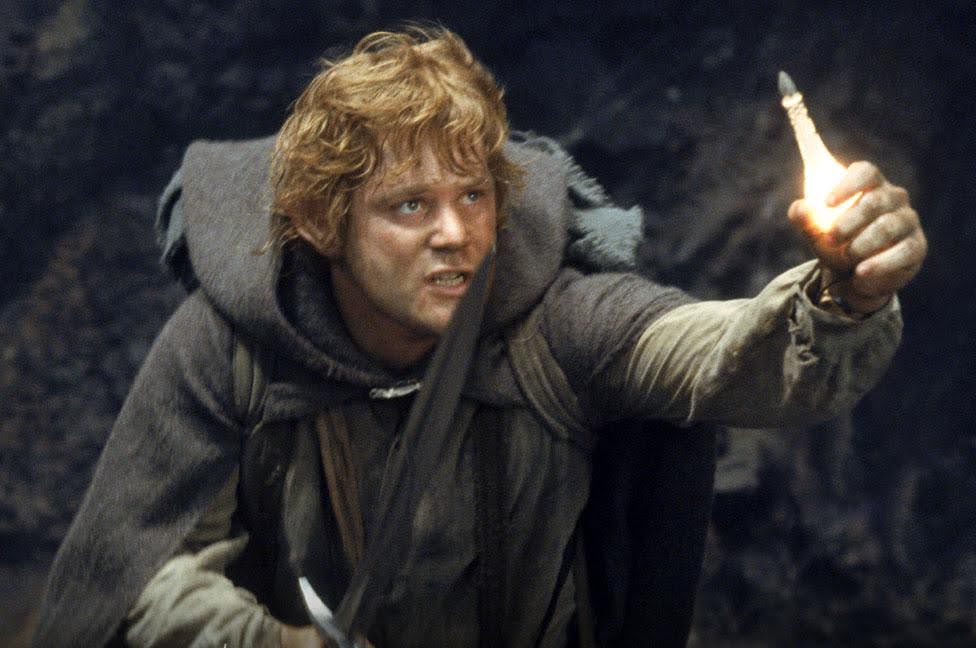
3. Family Drama
Family drama is everywhere and even depicted in film and television. Many B stories involve unresolved issues with parents, siblings and children.
This trope is commonly used in superhero narratives like Peter Parker’s conflict with Uncle Ben’s legacy in Spiderman or in dramas like This Is Us.

4. Rise of the Underdog
Supporting characters can have one of the most satisfying character arcs in a whole movie. Sometimes they have their own underdog story, such as Dustin and Steve’s growing bromance in Stranger Things, their arc providing comic relief or an emotional anchor for the rest of the plot.

5. A Moral Dilemma
Occasionally, the B story presents a moral or ethical question that complicates the protagonist’s goals, showing consequences, costs, or alternative paths. A fork in the road if you will.
Don’t let your B story drift.
Outline, track, and revise with Celtx’s scriptwriting tools.
Click here to try it yourself (it’s free!)
B Story Examples from TV & Film
Now we understand B stories and how they integrate into a story’s narrative, let’s look at some of the experts at work and some of the best B stories to come out of film and television.
Starting with…
Case Study #1 | The Dark Knight (2008)
The A story of the Christopher Nolan classic is essentially Batman trying to stop the Joker from destroying Gotham.
The B story is Bruce Wayne’s internal struggle between his identity as Batman and his hope for a future with Rachel. It’s this narrative threat which reinforces the overall theme of sacrifice and duality of man which underpins the movie.

Case Study #2 | Breaking Bad (2008-2013)
The A story that runs throughout the entirety of the five seasons is Walter White’s transformation from chemistry teacher to drug kingpin.
Alongside this, the B story depicts Jesse and Walter’s involved relationship, along with other moral dilemmas. These B story arcs humanize the story and provide crucial emotional grounding that the audience resonate with on a deeper level.

Case Study #3 | Finding Nemo (2003)
From one Walt to another (get it?!) in Disney’s Finding Nemo, Marlin’s perilous journey across the ocean to find Nemo makes up the A story.
Alongside this, the B story follows Nemo’s experiences in the dentist’s fish tank, learning to be brave. Both Marlin and Nemo’s arcs unite by the end of the movie, reinforcing the overall theme of trust and growth between families.

Case Study #4 | The Office (2005-2013)
With its eclectic ensemble cast, The Office’s A stories follow daily workplace comedy and business happenings in each episode. One of the many (and arguably most famous) B stories is Jim and Pam’s relationship.
Though not the central conflict of any given episode, it provides long-term emotional payoff and audience engagement. And boy, did fans love it!

How to Write a Strong B Story
Now we’ve seen how some of the industry’s best-known B stories intertwine with their A story counterparts, how do we integrate our own and make it compelling?
Writing an engaging B story isn’t just about throwing in a subplot whenever we feel like it. All B stories need intention as well as adding depth and resonance. Here are our top tips to do just that:
Ensure it’s Relevant to the Theme
Your B story should always link back to the main theme of the A story even if it’s from a contrasting or alternative perspective. For example, if the A story is about bravery in battle, the B story could then be about emotional courage in a relationship.
This bolsters the theme of courage in the face of adversity, whether physically or emotionally.
Let Supporting Characters Shine
The B story is the stage on which minor characters can have their moment. Write your B story well and you can turn a sidekick into a fan favorite (just ask Sam Gamgee from The Lord of the Rings!)
It is a fine balance, however, as you don’t want a supporting character’s arc to outshine the main plot and the protagonist’s journey.
Intercut, Don’t Interrupt
B stories shouldn’t feel like afterthoughts or distractions. Instead, they should connect to the A story at deliberate moments through character decisions, thematic echoes or converging plot points.
Build Stakes or Payoff
Did you know that the emotional climax of a film can be within the B story? Consider how you could use this secondary plot point to create tension, surprise, or a resolution that hits audiences even harder.
Keep it Simple and Subtle
When intercutting your A and B stories, remember that the B story plot points don’t need to be drawn out. Often, a short scene of dialogue, a key interaction, or a minor arc is enough to deepen an audience’s connection to the characters.
In short, don’t overthink it!

FAQ:
Do I need a B story?
It completely depends on the material you’re writing. Some short films or tightly constructed stories operate well without one. However, if you’re writing a feature film or serialized television, we highly recommend crafting a B story.
If you find the story you’re working on feels emotionally flat, you’ll probably discover that adding a B story may be the answer to your problem, for all the reasons we’ve talked about in today’s blog.
What is a C story?
You’ll usually find C stories in ensemble shows such as Brooklyn Nine-Nine or Game of Thrones. Essentially, C stories are tertiary plotlines involving minor characters or comic relief. They run alongside the A and B plots, exploring side characters and setting up future episodes.
Let’s break down the plot of The Avengers:
The A story depicts The Avengers working to stop Loki from conquering Earth.
The B story is Tony Stark and Steve Rogers’ clash over leadership.
The C story is Bruce Banner trying to manage his temper, shown by a few humorous and awkward interactions that foreshadow his Hulk transformation. It allows the rest of the plot to breathe while also adding some humor into the high-stakes plot.

Conclusion
A well-written B story can elevate your narrative from good to great. It’s where character depth, theme exploration, and emotional resonance often live. While the A story keeps the audience on the edge of their seat, the B story is what makes them care.
Whether it’s a romantic subplot, a best friend’s emotional journey, or a moral dilemma playing out in the background, the B story offers writers a valuable tool. It’s not just a sidebar, but it’s the heart and soul behind the plot.So next time you’re outlining your screenplay or TV pilot, don’t ask yourself if you need a B story. Instead ask how your secondary storyline can enrich the entire piece.
Want your B story to support the main plot, not distract from it?
Start building smarter with Celtx – click here to start your free trial.
For more on story development:
- How to Write a Good Story Using the Five-Act Structure
- Protagonist vs. Antagonist: Storytelling’s Core Conflict
- The Climax: How to Write the Moment That Changes Everything
